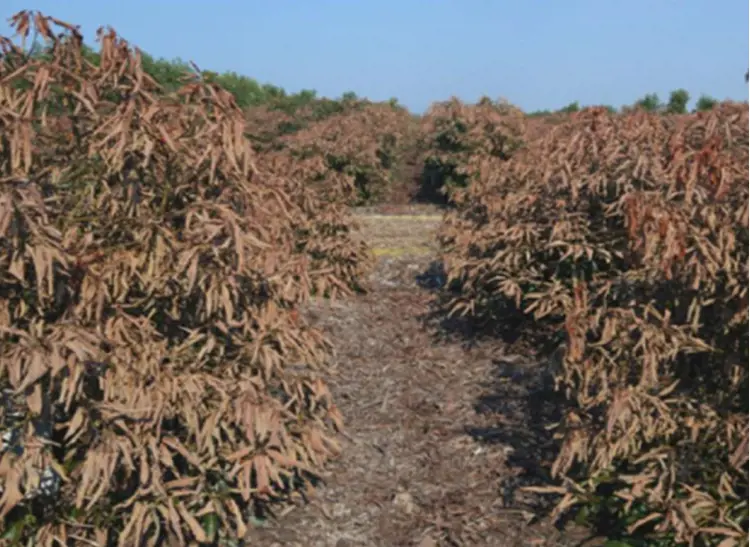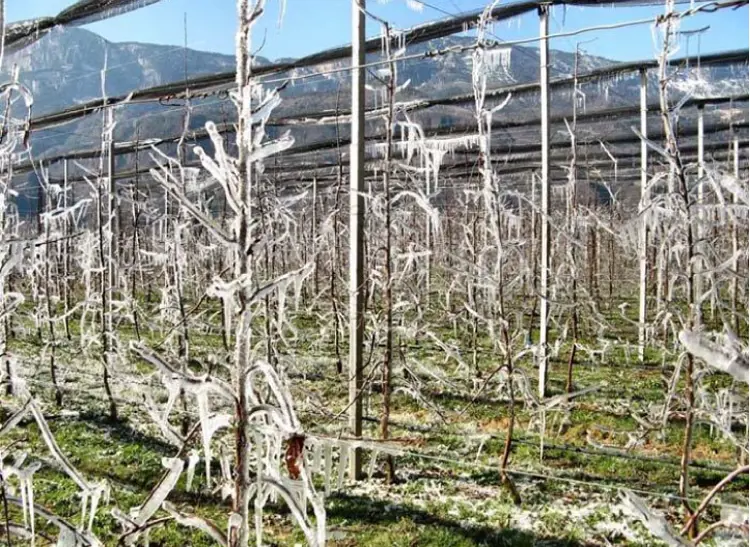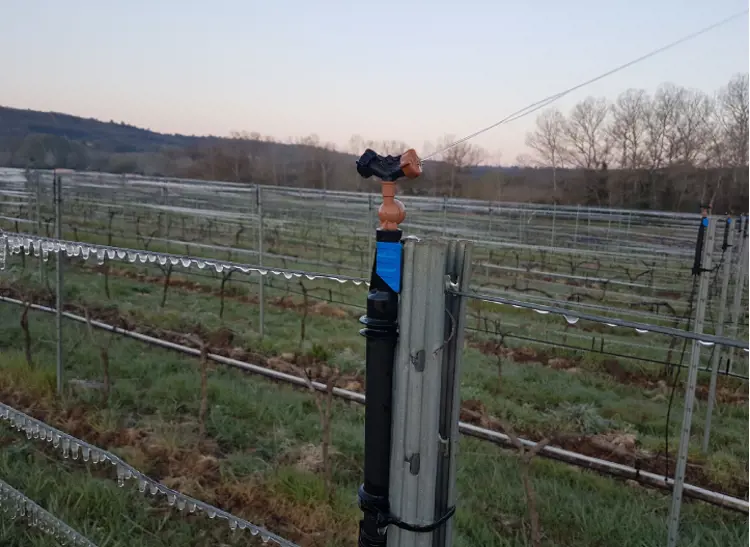The Battle Against Spring Frost Warms Up
In recent months, I kept coming across similar headlines:
“At least one-third of this year’s French wine harvest was lost…”
“Hungarian fruit growers have reported spring frost damages in all regions..”
“Grain yield was reduced by 8% due to late May frost..”
If you dig deeper beyond the devastating headlines, you’ll realize that the common thread to the grim reality that they paint involves what we call “Spring Frost”.
What is frost and how can it damage orchards?
The intricate relationship between climate change and spring frost
The latest comprehensive U.N. report on climate change spells it out loud and clear; “Climate change is widespread, rapid, and intensifying”. Spring frost has always been around, keeping farmers on their toes. But when climate change is spiraling and the weather becomes so extreme, farmers are in the dark; struggling to predict and anticipate when exactly it will hit next. Moreover, the natural chaotic variability of the atmosphere results in severe and unpredictable cold spells later in the early spring. When this happens after the start of the growing season, these frost events can create devastating damage to trees and their productivity during the season and sometimes for life.
Frost events during the active growth period of plants can cause extensive frost damage with tremendous economic losses and dramatic ecological consequences. The damage affects growth, health, competitive ability and distribution limits of plants. Studies have found it can take 16–38 days for trees to refoliate after a freeze which can detrimentally affect crucial processes such as carbon uptake and nutrient cycling. This comes with a huge price tag. For example, a frost event across Europe in spring 2017 resulted in economic losses of €3.3 billion, with only around €600m of this insured.

Frost damage - Avocado. About 800 Hectare were damaged in Western Galilee, Israel 2016
Farmers are the pillars of our food supply chain. They are in charge of planting, cultivating, harvesting and pushing food to market on a timely consistent schedule so we can all have food on our table, 365 days a year. When spring frosts caused by climate change become the norm, farmers will struggle to grow enough food and meet the requirements of the food cycle. This puts farmers and farming communities under stress and adds another obstacle to our already jeopardized food security.
The issue is spreading
Frost damage has been seen everywhere in recent years. From apple trees in China, Hungarian peach trees, and coffee in Brazil, growers are frustrated by the devastating impacts of these cold snaps.
Such was the case in France this year. In early April, exceptionally low daily minimum temperatures, below -5°C, were recorded in several places, leading to severe damage to grapevines and fruit trees in these places. To make things worse, the cold event happened a week after an episode of record-breaking high March temperatures, leading to the growing season starting early and leaving new leaves exposed to the deep frost episode that followed. The resulting damage affected “several hundreds of thousands of hectares” according to the French Ministry of Agriculture who also called the event “probably the biggest agricultural disaster in the beginning of the 21st century”.

Frost in Italy
Tackling the problem head-on
Farmers worldwide have been juggling different frost protection methods since the ancient days of the Roman Empire. Back then, growers used to burn piles of pruned wood to heat their vineyard during spring frost events. Modern frost protection methods include activities that are done during a frosty night to mitigate the effects of subzero temperatures. These methods include: heaters, wind machines, helicopters, nets, overhead sprinklers and under tree irrigation.
Each method has its own pros and cons. Heaters provide supplemental heat to help replace energy loss but they are heavy consumers of energy and pollute the environment plus 75%-85% of heat is lost in the process. Windmills work well when combined with other frost protection methods but their energy consumption is high. Helicopters can get the job done but they are limited in number and expensive to operate. Nets are certainly a greener solution but require substantial labor time to apply them.
One method proven effective involves sprinkler systems (they have been successfully used as frost protection since the 1940s!). The energy consumption of sprinklers is considerably less than with heaters or wind machines, so the operational costs are lower. The main challenge of using sprinklers is that they require substantial water resources.
An innovative way to overcome this challenge and guarantee precise and focused water coverage of a large area while saving considerably on water usage is by using smart sprinklers like Netafim’s Pulsar™. Designed for orchards and vineyards, Pulsar™ distributes water continuously with equal pulses. Its hydraulic pulsation delivers flawless low flow rate, while using less than 50%-70% of the water required by full-coverage sprinkler systems. Add to that reduced energy cost, and high durability and you have a powerful frost mitigation tool that can lower growers operating costs by up to 30% compared to other systems.

PulsarTM - the most cost effective and water efficient solution to fight the frost.
Harnessing technology in the fight against unpredictable cold spells
2019 marked the end of the warmest decade (2010- 2019) ever recorded. Its impact is undeniable; weather patterns are changing, sea levels are rising, and weather events are becoming more extreme. As growers, we need to face reality. The unpredictable and eluding spring frost phenomenon is here to stay. If we want to meet them head to head, and protect our precious crops, we need to take active measures. And while the idea of lighting big bonfires across your orchard is hardly viable, we can and should harness technology to fight back - effectively, economically, and with minimum damage to the environment.


Comments
We'd love to hear your thoughts! To enter a comment, type your name and email address.